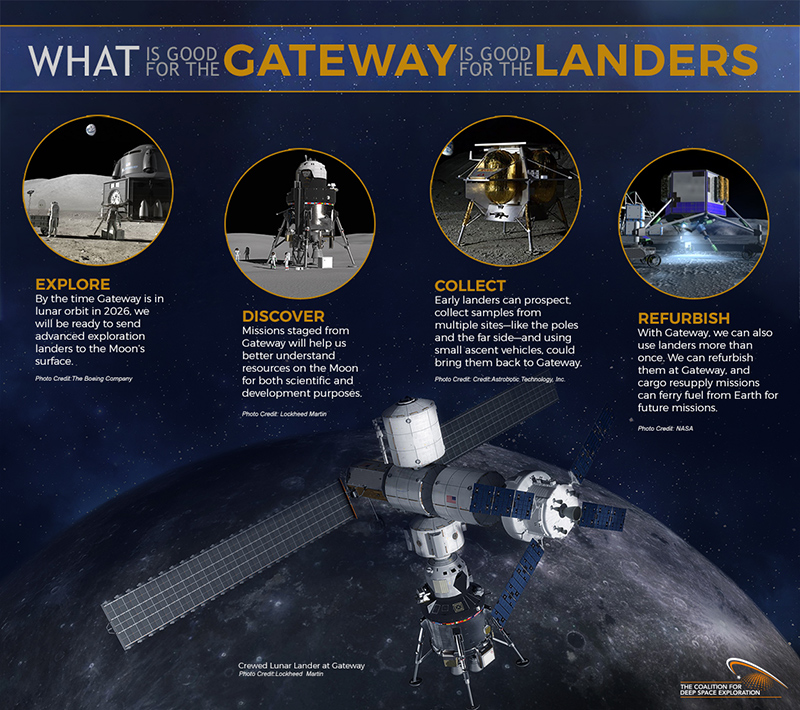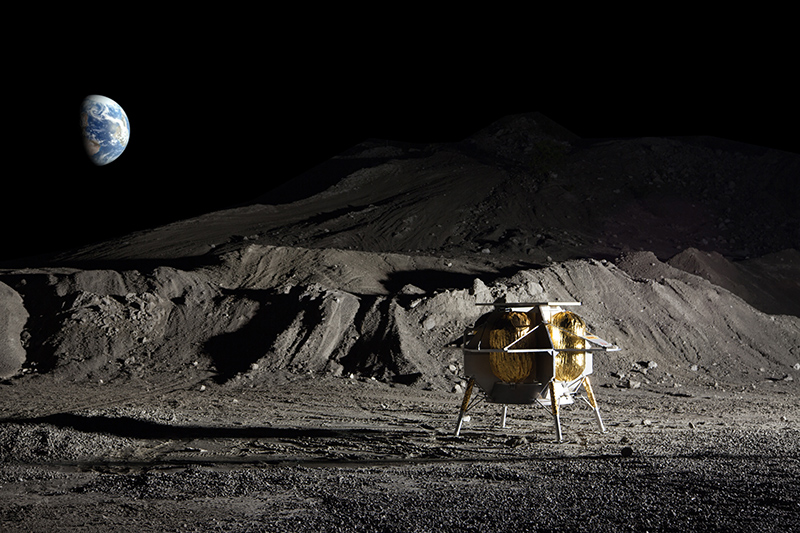Here’s a little-known fact: Gateway can help us get maximum use out of the landers we are sending to the Moon. NASA expects to award contracts for small commercial landers in December, and these landers are expected to launch to the Moon’s surface starting in 2019. Three years later we expect to have mid-sized robotic landers on the surface. By the time Gateway is in lunar orbit in 2026, we will be ready to send advanced exploration landers to the Moon’s surface. And here’s the thing—with Gateway, we can send them to places on the Moon we haven’t been able to access before.
So far, we’ve collected samples from only one small area on the Moon’s surface. We now know there is ice at the poles, but we have no idea how difficult it may be to get to it and process it. In addition we have no idea what minerals asteroids and meteorites may have brought with them when they crashed into the Moon and formed all its craters. Perhaps there are rare Earth metals, or minerals that could help us build human habitats and factories where we could make propellant. There is so much ground we haven’t covered, and we need a combination of in situ sample analysis and sample return to really figure out what we have to work with up there.
Speaking of sample return, that’s another activity made easier with Gateway. Early landers can prospect, collect samples from multiple sites—like the poles and the far side—and using small ascent vehicles, could bring them back to Gateway. With data from different locations, we will be better able to select a landing site for humans, where we can do much more than plant a flag. Exactly what we do there will be determined by the resources we find as well as by the science objectives that we and/or our partners pursue.
With Gateway, we can also use landers more than once. We can refurbish them on Gateway, and cargo resupply missions (likely carried out by reusable commercial launch vehicles) can bring additional fuel for them. Reusing landers makes a lot of sense because launching one from Earth takes a tremendous amount of energy (which is expensive), and you need only a fraction of that to get one to and from the surface of the Moon.
Landers that will help us do surface operations on the Moon not just a few times, but regularly, will enable us to have a long-term, sustained presence on the Moon. That’s very different from the goal of Apollo—this time we are going to the Moon to stay, and while we are there, we will continue testing technologies we will need for our next destination: the surface of Mars.



